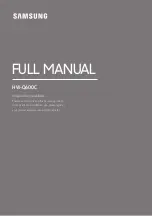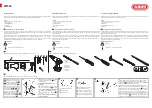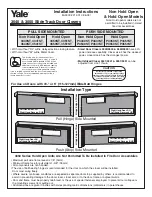
21
Table 11 — Troubleshooting Guide For ComfortID™ Terminal Controls
VVT® CONTROLS
General
DIRECT DRIVE HIGH TORQUE ACTUATOR —
The
direct-drive high torque actuator is used in VVT (variable
volume and variable temperature) systems for changing the
damper position. The actuator is factory-installed on the termi-
nal damper and is controlled by a zone controller or a monitor
thermostat. The thermostat calculates how much heating or
cooling is required to each zone in the VVT system. The actua-
tor receives the commands from its controlling device and
moves its damper to change the amount of heated or condi-
tioned air that is sent to its zone.
If the 35E unit is equipped with electric heat, only power to
the electric heater must be supplied. If the unit does not have an
electric heater, then a field-supplied dedicated 24 vac/Class II
power source must be installed and wired to the VVT control-
ler. Refer to Table 12 for the minimum VA requirement and to
the wire label diagram for power connections.
RELAY PACKAGE — The relay package is factory-supplied
as required depending on the control package ordered.
The relay pack output harness is connected to the output
connector on the relay pack. The pigtail is routed through the
grommet the bottom of actuator.
For hot water heat applications, connect the white wire from
the relay pack output harness to the field-supplied two-position
water valve. See the unit wiring diagram for more information.
ADDITIONAL SENSOR INSTALLATION — Additional sen-
sors are required for certain control sequences. A pressure
transducer is factory supplied, wired, piped, and installed in-
side the control box for units with pressure independent con-
trols. Follow the installation instructions provided with each
sensor.
NOTE: Pressure sensor is NOT installed inside the actuator
housing. There is no clearance available for the pressure trans-
ducer inside the actuator.
THERMOSTATS — Thermostats are sold separately and are
not provided as part of any VVT control package. Refer to the
specific control publication for thermostat operation.
Thermostat Placement —
Begin the thermostat instal-
lation by determining where the device will be located. In most
cases, this will be pre-determined by the building plans.
The thermostat should be located on an interior wall, about
5 ft from the floor. The device should be located away from di-
rect sunlight, drafts, or interior heat sources which may influ-
ence temperature readings.
The device may also be mounted in a remote location with
the use of an optional remote room sensor.
To mount the thermostat, perform the following:
1. Cut a hole in the wall for the terminal board housing. The
hole should be 1
3
/
4
in. by 1
3
/
4
inches. See Fig. 29.
NOTE: A 2-in. x 4-in. electric box mounted horizontally
may be used instead of cutting the hole.
2. Remove the cover from the thermostat/controller. Care-
fully remove the circuit board from the backplate of the
thermostat/controller. Line up the backplate with the hole
in the wall. Push the protruding part of the backplate into
the hole. Pull the thermostat/controller wires out through
the backplate.
3. Attach backplate to wall with screws provided.
Wiring Requirements —
The wiring requirements for
the Carrier Comfort Network® system are:
CCN COMMUNICATIONS — 18 or 20 gage, 3-conductor,
shielded, stranded wire, color coded (RED, BLACK,
GREEN), plenum rated if required, long enough to run from
thermostat to thermostat in daisy-chain configuration. (Refer to
Table 12 for specific control package requirements.)
Table 12 — Minimum VA Requirements
PROBLEM
CAUSE
CORRECTIVE ACTION
Measured Airflow Does Not Agree
With Display Value.
Terminal airflow not calibrated or airflow
sensor not calibrated.
Wrong terminal inlet size.
Perform damper/transducer and zone calibration.
Check and correct terminal inlet size if necessary.
Supply Air Temperature (SAT)
Displays 0.0°. Terminal Not Equipped
With Heat or Field Installed.
No heat type configured or ducted heat not
configured.
For terminals without heat, the SAT sensor is
not used. If required, configure Heat Type = 2
and Ducted Heat = YES.
Baseboard Perimeter Heat Does
Not Work.
No heat type configured.
Configure Heat Type. If modulating baseboard,
then Ducted Heat must equal YES and sensor
HH79NZ078 must be affixed to measure leaving water
temperature.
Modulating Baseboard Hot Water
Heat Does Not Control Properly.
Improperly configured.
Readjust the following service configuration parameters:
Heat Start Value = 110 F
Maximum Duct Temperature = 180 F
P Gain = 20
I Gain = 1.3
Electric Reheat Does Not Operate.
No power to heater.
Airflow too low or high temperature limit
tripped.
Check fuses and disconnect.
Verify airflow exceeds 500 fpm. Adjust Reheat CFM Limit if
required to operate below 120 F discharge with all stages
operating.
Hot Water Reheat Does Not Operate.
No hot water available.
Water valve wired wrong or not functioning.
Repair as required.
Check wiring and correct if necessary. Retest water
valve operation.
Excessive Air Noise.
Airflow limits not set properly.
Excessive system static pressure.
Diffusers too small.
Check and readjust maximum airflow limits.
Check system static pressure. Reduce pressure if required.
Replace with proper size.
Unit Will Not Provide Modulating
Damper Control During Air Source
Heating/Warm-Up Mode.
Primary air temperature sensor not
installed and no Linkage Master is used
(PAT sensor required for control package
4140 and 4145, cooling only, stand-alone
operation).
Install PAT sensor and configure as a Linkage Master
with a system size of 1 zone.
CONTROL SEQ NO.
MIN VA REQUIREMENT
8200
30
8201
Factory Supplied (75)
8202
40
8206
35
8207
Factory Supplied (75)
8208
45
8209
30
8210
35




































